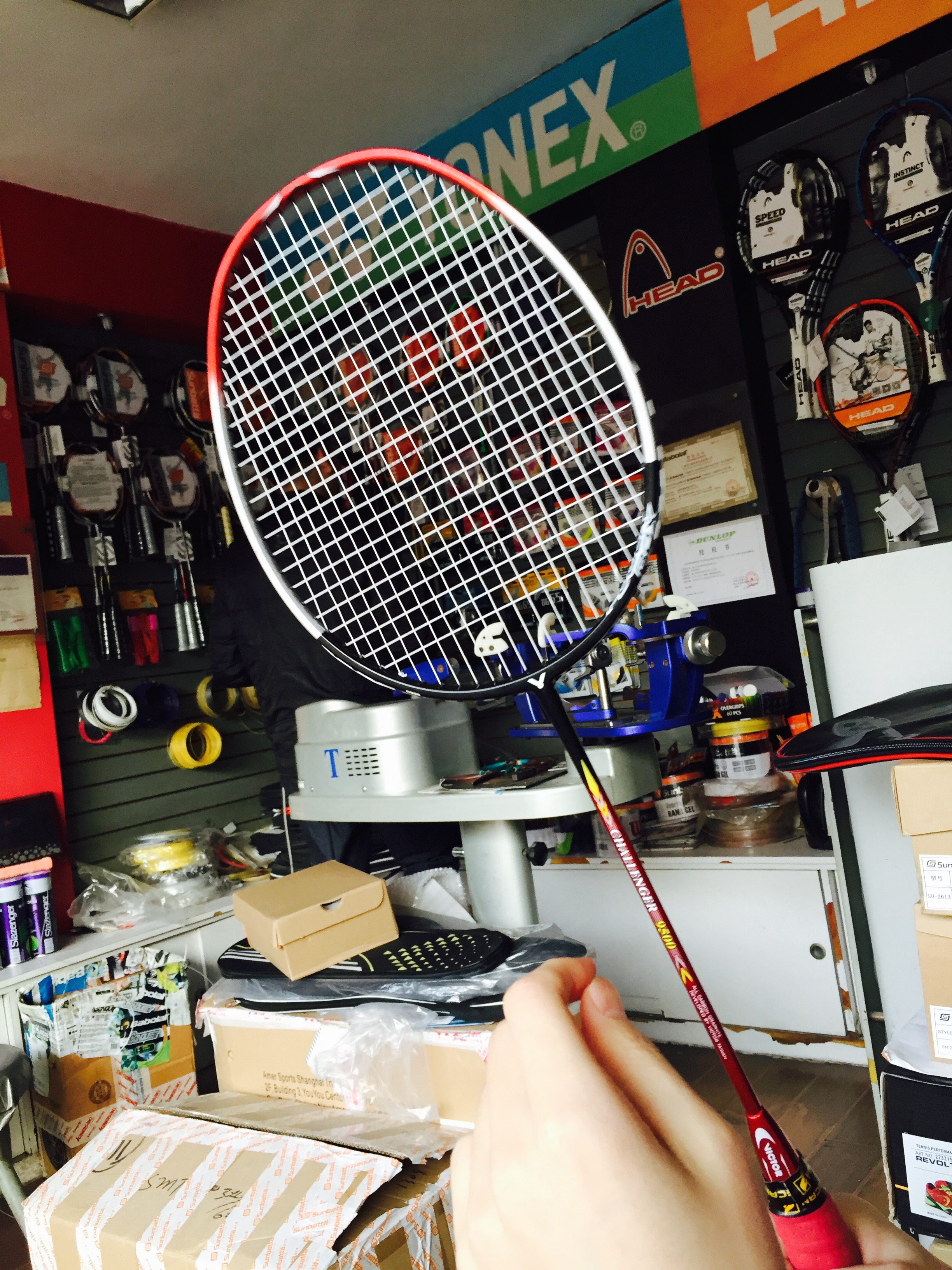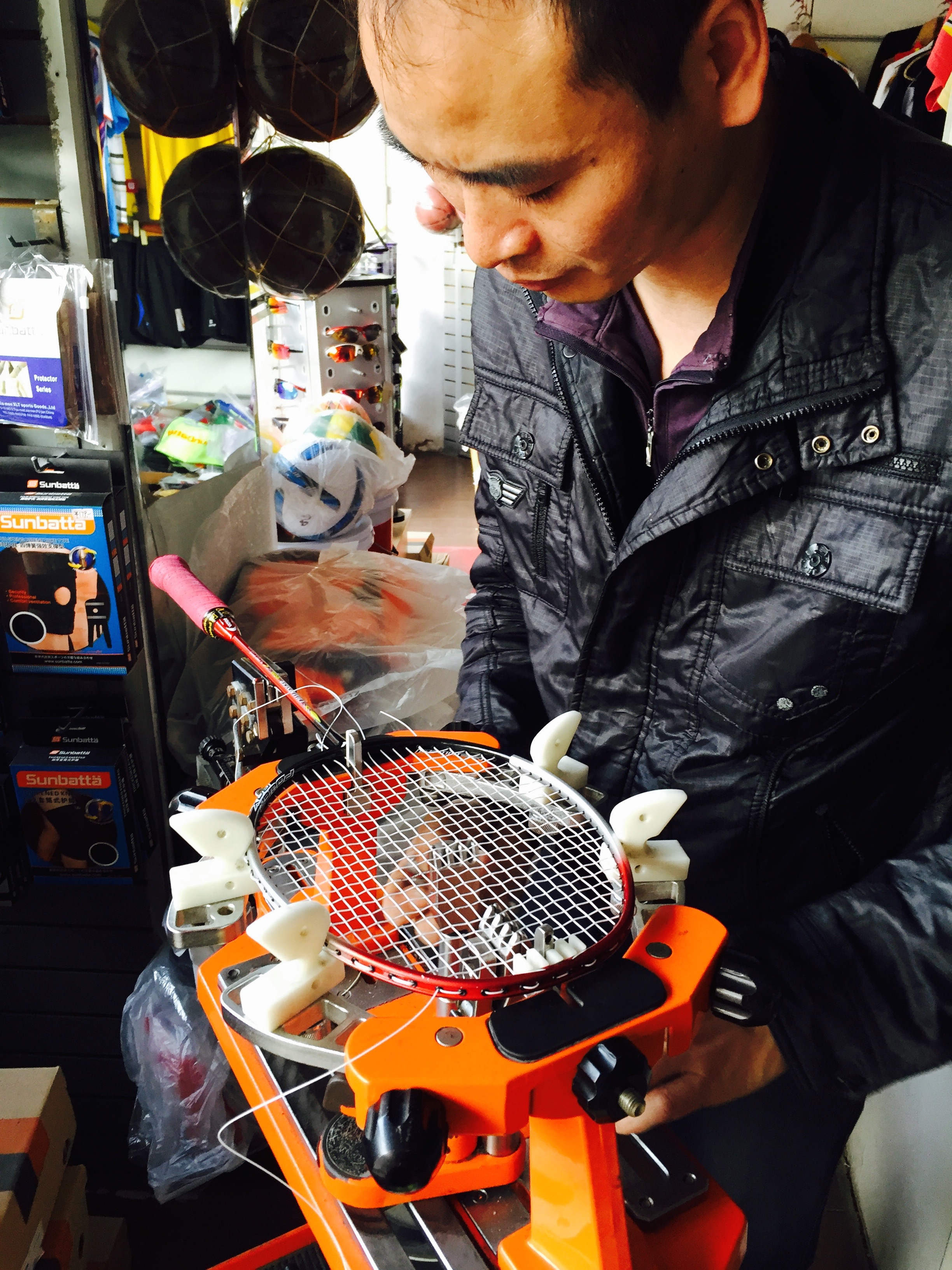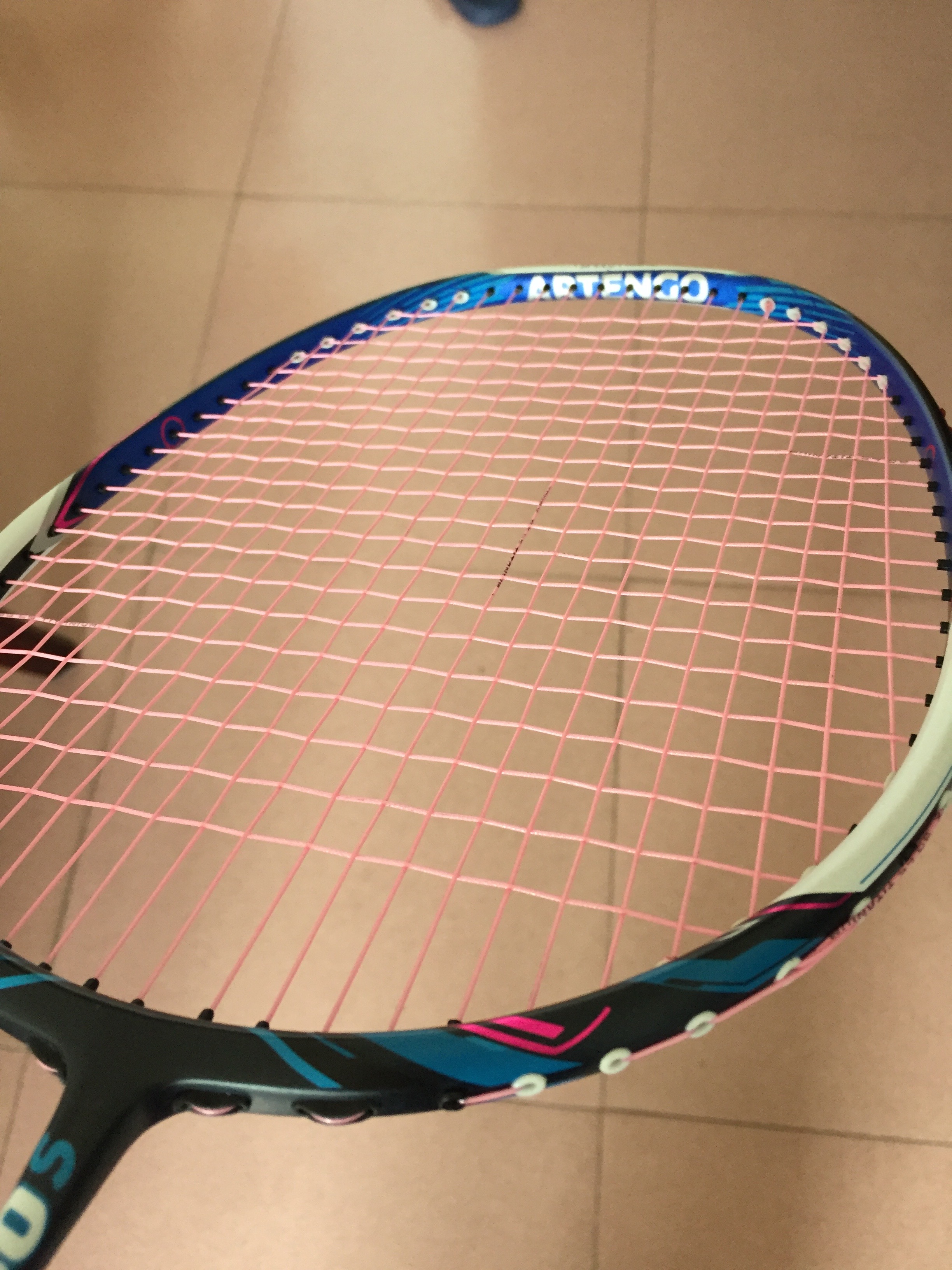With badminton rackets you need to regularly get them restrung because they lose tension. My friend Xiao He changes his about once every 2 weeks. Meanwhile, I hadn’t changed mine for more than 7 months. Time to figure it out.
Changing racket strings isn’t so simple. First you gotta figure out what kinds of strings to get. There are thin strings and thick string and strings made of different materials. This is one of those things that you need to try out and see what works for you. Unfortunately for me, all the information, and the “string experts” speak Chinese and I’m afraid I don’t know words like “polymer” and “filament” and other words that string experts use. So I was a bit nervous about that part.

I went with my friend Xiao He to get his rackets restrung a few weeks ago. I got to watch the whole process.
Another problem is figuring out the racket tension. Back in the day, when everyone used those old wood rackets, every racket was strung to 15lb of tension. But now rackets are carbon fiber and can take a lot more pressure. And like the strings, it is up to the person and their needs.
High string tension gives you much better control but you also loses some power. There is no give to the strings so the racket absorbs none of the energy, and it is left up to your wrist and arm to do all the work (it also means your wrist and arm takes all the tension and it can cause injury).
Lower tension gives you more power, but less control. The pros have a very high tension, usually 30lbs, so higher tension means more expertise.
But what would be right for me? Luckily I have a teacher and he knows my skills better than anyone. He suggested 24 for me. It’s funny because in China 22 is considered a beginners tension level, where in other countries, it’s considered intermediate. Just one of the culture differences of training in China. Even beginners are expected to be at a higher level, because you probably have been learning since childhood how to play.
So, I finally bit the bullet and restrung my racket. I did it at the place where I play badminton twice a week. I knew the tension I wanted, but not the string type. Luckily the owner just kinda took my racket and gave me whatever (it’s not a store, so they didn’t have a ton of choices.) I told the owner I wanted 24 and and suggested 22. I said my teacher suggested 24 and she gave me a racket to try. I played a point with it and it felt good so I said sure.
“It’s 22,” she said. (She’s kinda bitchy.) So I got 22. I told my teacher and he said it was no big deal, but next time I should insist on 24. I won’t let her bully me again.
Stringing a racket is like tying a complicated pair of shoes. They actually just string it, pulling the thread in and out of each little hole on the side of the racket, occasionally tying it off. The tension comes from a frame they string it on with some clamps and knobs to get it right. There are computerized ones, but my friend Xiao He assured me the old fashioned manual ones were much better. It took about 20 minutes and cost $10. It’s very cool to watch, like a master weaver.

First they string the racket.

Then they put it in a frame and tighten it up to the proper tension and tie it off in a few places.
She gave me bright pink strings and I felt like my racket was much stronger and my shots were cleaner afterwards. They say you lose 10% racket tension within the first day and more as time goes by. As mine had been months and months, I’m guessing my tension was very low. Too low to give me much control or power.
Now that I’ve finally done it, successfully, I won’t be so nervous and wait so long to do it next time. All strung up and ready for new games!







